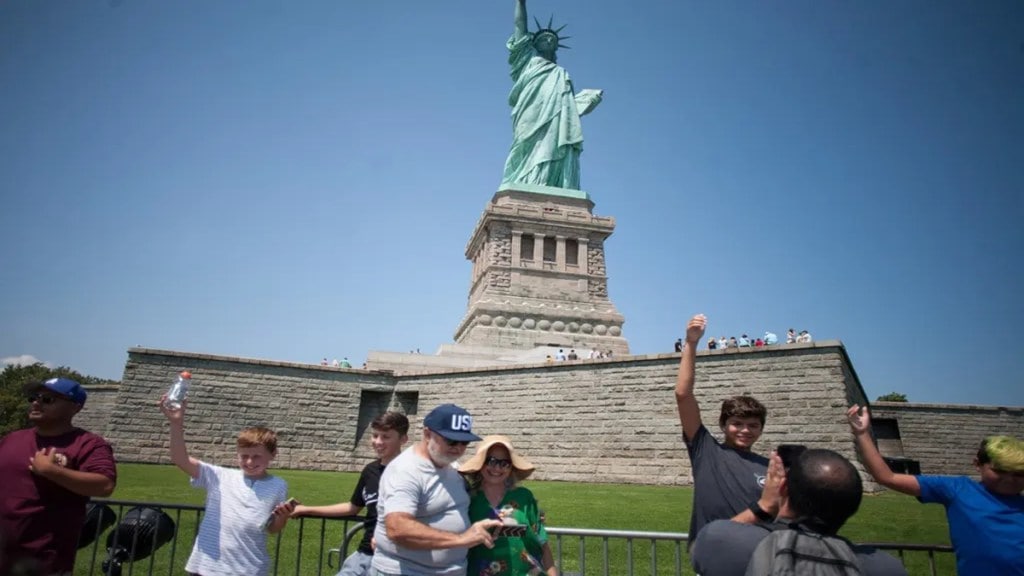American citizenship is a significant status symbol for many global citizens, serving as a benchmark for success. For foreign nationals who seek to get US citizenship and lawfully reside in the United States, there is a set process known as ‘naturalization’.
U.S. Citizenship and Immigration Services recently released a video message in which President Trump welcomes newly naturalized citizens. This video message will be played at naturalization ceremonies across the country where foreigners take the Oath of Allegiance to become U.S. citizens after meeting all the requirements for naturalization, including following the law, speaking English, and demonstrating an attachment to the U.S. Constitution.
In the video message, President Trump describes U.S. citizenship as a “sacred honor” and reminds new citizens that with this “comes the highest responsibility.”
Lawful permanent residents (LPRs) who meet the standards set forth by Congress and listed in the Immigration and Nationality Act (INA) are granted U.S. citizenship through the process of naturalization.
The lawful permanent residents, also known as ‘green card’ holders, are foreigners lawfully authorized to live permanently within the United States. A Green Card, officially known as a Permanent Resident Card, allows a foreigner to live and work permanently in the United States.
The green card holders can apply to become U.S. citizens if they meet certain eligibility requirements.
In general, U.S. immigration policy allows all green card holders to ‘naturalize’. To qualify for citizenship, green card holders in most cases must have resided continuously in the United States for five years, demonstrate an understanding of the English language, and pass a U.S. government and history examination, which is part of their naturalization interview.
The Immigration and Nationality Act (INA) provides several ways to gain LPR status. These are called classes of admission. The largest class is family reunification. The United States also grants LPR status for economic and humanitarian reasons. Diversity also plays a role. Immigrants from countries with relatively low levels of immigration to the United States can gain LPR status.
Immediate relatives of U.S. citizens make up the largest category (more than 40%) of new LPRs. These include spouses, children, and parents of U.S. citizens age 21 and older.
Family members beyond immediate relatives may be eligible for immigration. A citizen or lawful permanent resident can sponsor immigrants within four categories. They are:
- Unmarried children of U.S. citizens and their children
- Spouses and unmarried children of alien residents
- Married children of U.S. citizens and their spouses and children
- Siblings of U.S. citizens (at least 21 years of age) and their spouses and children
People with skills needed in the U.S. workforce or who want to invest in new U.S. jobs are also eligible to immigrate. There are five categories of employment-based preference. They are:
- Priority workers like foreigners with extraordinary ability, Multinational executives or managers.
- Professionals with advanced degrees or exceptional ability
- Skilled workers, professionals, and unskilled workers
- Investors who create new U.S. jobs
According to A Congressional Research Service (CRS) report, as of 2023, a total of 28,31,330 foreign-born American nationals were from India, which is the second largest number after Mexico’s 10,638,429. As of 2023, as many as 290,000 India-born foreign nationals who were on a Green Card or Legal Permanent Residency (LPR) were potentially eligible for naturalization.
In March, CBS News reported that the Trump administration has suspended issuance of some green card applications as part of an aggressive vetting exercise for certain individuals, including approved refugees, as part of a broader immigration vetting effort.
After arriving in the US, immigrants pursuing a green card must petition (apply) to transfer their temporary status through the Adjustment of Status procedure. Eligible noncitizens residing in the United States can change their immigration status to Lawful Permanent Resident (LPR) status without having to leave the country by completing the crucial adjustment of status process.
Congress has the authority to change US immigration laws as needed or to loosen the country-based cap. If nothing changes, Indian immigrants could have to wait more than 20 years—and in some circumstances, more than 70 years—for a Green Card, and thereafter apply for citizenship through naturalization.

